If you’ve ever used a rice cooker, you may have noticed that it sometimes bubbles during the cooking process. This can lead to messy spills and leave you wondering if something is wrong. In this section, we’ll answer the common question of whether a rice cooker is supposed to bubble, and explore the causes and solutions for excessive bubbling.
Key Takeaways:
- Many rice cookers will bubble during the cooking process, but excessive bubbling can indicate an issue.
- Understanding the causes of bubbling, such as improper water-to-rice ratio or high heat settings, can help prevent messy spills.
- Regular maintenance and troubleshooting can help resolve persistent bubbling issues.
Understanding the Rice Cooking Process
Before addressing why rice cookers may bubble or even bubble over, it’s important to understand how rice cookers operate. Rice cookers work by applying heat to the inner pot, which heats the water and rice inside. As the water boils and is absorbed by the rice, the temperature inside the rice cooker rises. Once the water is fully absorbed, the temperature inside the cooker plateaus, and the cooker automatically switches to a “keep warm” mode.
Rice cookers are designed to be efficient and convenient, but they can still encounter problems during operation. One common issue is bubbling, which can occur for several reasons. If the rice cooker is not filled with the proper amount of water or measurements of rice, it can cause the water to bubble and boil over. Additionally, if the heat is set too high, or the cooker is not cleaned regularly, it can also lead to bubbling and potential messes.
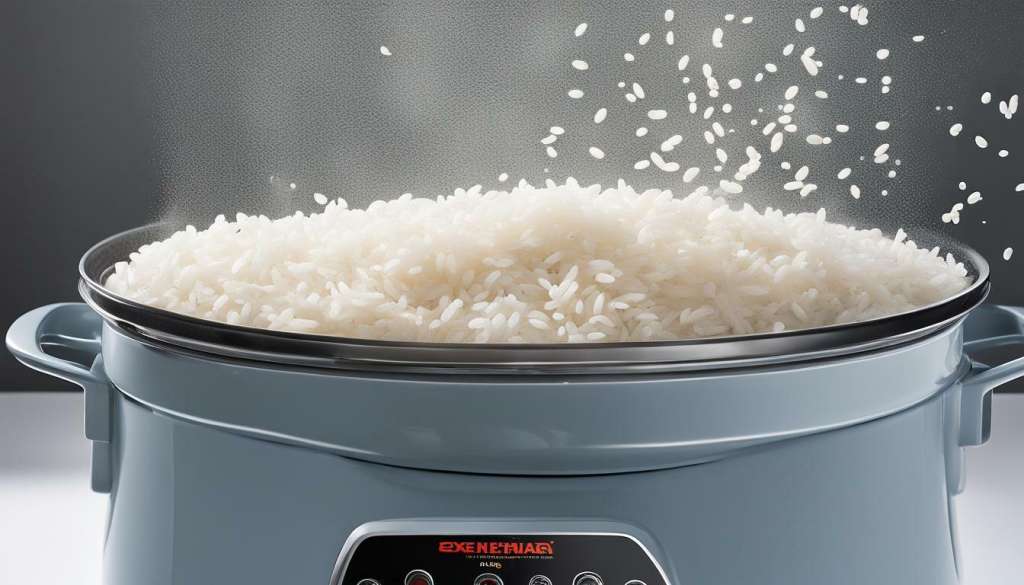
Common Causes of Bubbling
Are you experiencing bubbling or boiling over with your rice cooker? There could be several reasons why this is happening. Let’s take a closer look at some of the common causes of bubbling and how to solve them.
Excessive Water
One of the most common reasons why a rice cooker may bubble is due to using too much water. Follow the recommended water-to-rice ratio provided with your rice cooker or use a 1:1.5 ratio of rice to water. Using too much water may lead to increased bubbling and even boiling over of the water.
High Heat
Another potential cause of bubbling in a rice cooker is using high heat. It’s important to choose the correct heat setting for your rice cooker and the type of rice you are using. Be sure to follow the instructions provided by your rice cooker’s manufacturer.
Incorrect Measurements
Using incorrect measurements for rice and water can also result in bubbling or boiling over. Be sure to use the correct measuring tools and follow the guidelines for the type and amount of rice you are cooking. This can help you avoid any unwanted bubbling or boiling over.
By understanding and addressing these common causes, you can enjoy perfectly cooked rice without any unwanted bubbling or boiling over.
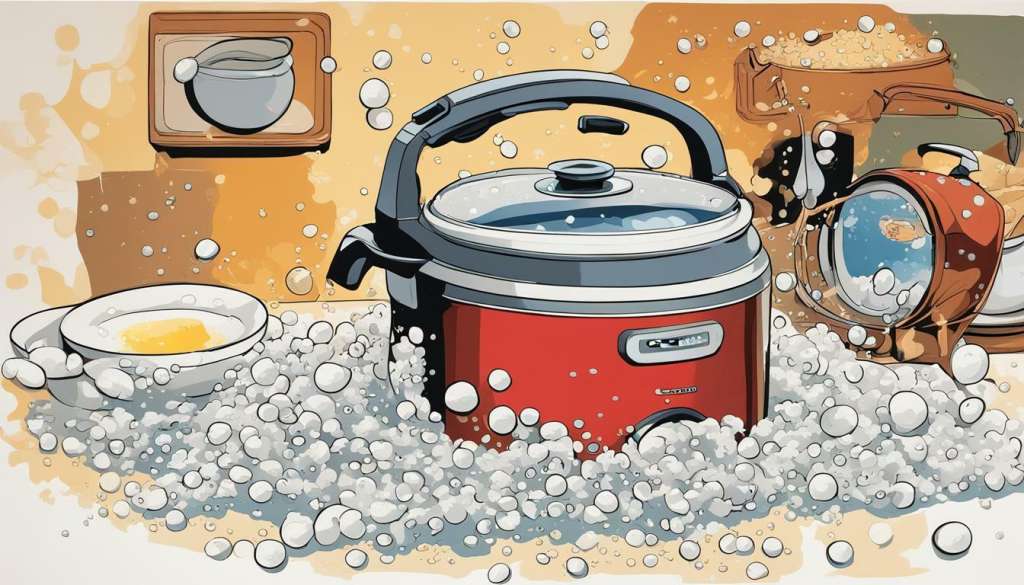
Proper Water-to-Rice Ratio
Achieving the correct water-to-rice ratio is crucial to prevent bubbling and ensure perfectly cooked rice. Most rice cookers come with measuring cups to help with this process. The general rule of thumb is to use one and a half cups of water for every cup of rice. However, this ratio can vary depending on the type of rice being used, so it’s essential to follow the manufacturer’s instructions.
When adding water to the rice cooker, make sure to measure accurately and avoid overfilling the pot. Overfilling can cause the water to bubble over and spill onto the heating element, leading to potential electrical hazards and damage to the appliance.
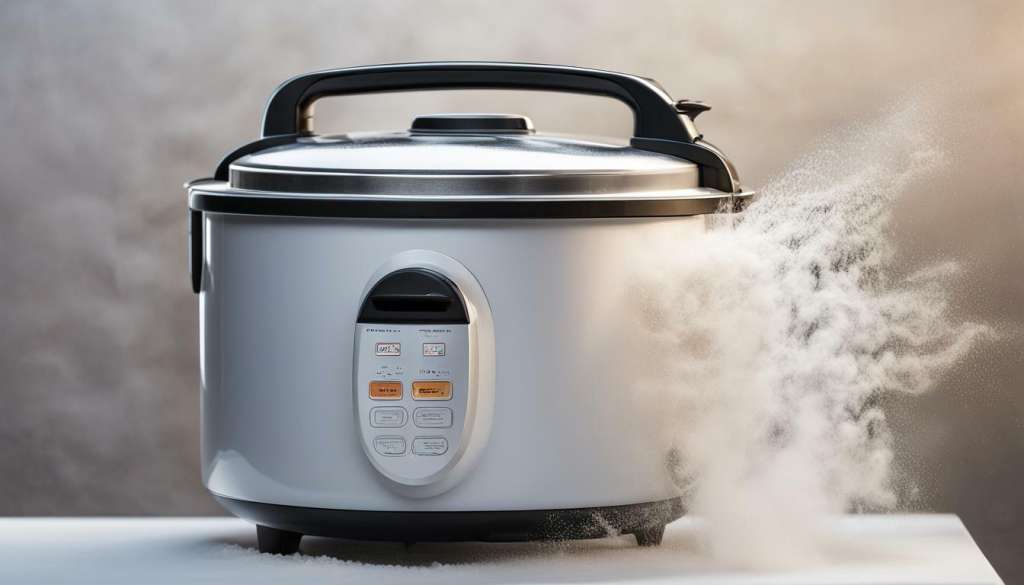
If you’re unsure about the correct ratio of water to rice, use less water initially and check the consistency of the rice after it has cooked. If the rice is too hard, add a little more water and continue cooking. If the rice is too soft or mushy, use less water next time.
Adjusting Heat Settings
If your rice cooker is making bubbles or bubble sounds during the cooking process, it may be due to high heat settings. Excessive heat can cause the water to boil too rapidly, leading to bubbling and potentially overflowing. To prevent this problem, it’s important to adjust the heat settings on your rice cooker.
Start by checking the heat settings on your rice cooker. If the heat is set too high, turn it down to a lower setting. You may need to experiment with different heat settings until you find the right one for your rice cooker.
Another option is to use the “quick cook” or “fast cook” feature on your rice cooker, which reduces the cooking time and can help prevent bubbling. However, keep in mind that using the quick cook feature may result in slightly less fluffy rice.
If you find that your rice cooker is still bubbling excessively after adjusting the heat settings, try adding a small amount of oil to the water. This can help reduce bubbling by breaking the surface tension of the water. However, be careful not to add too much oil, as it can affect the taste and texture of the rice.
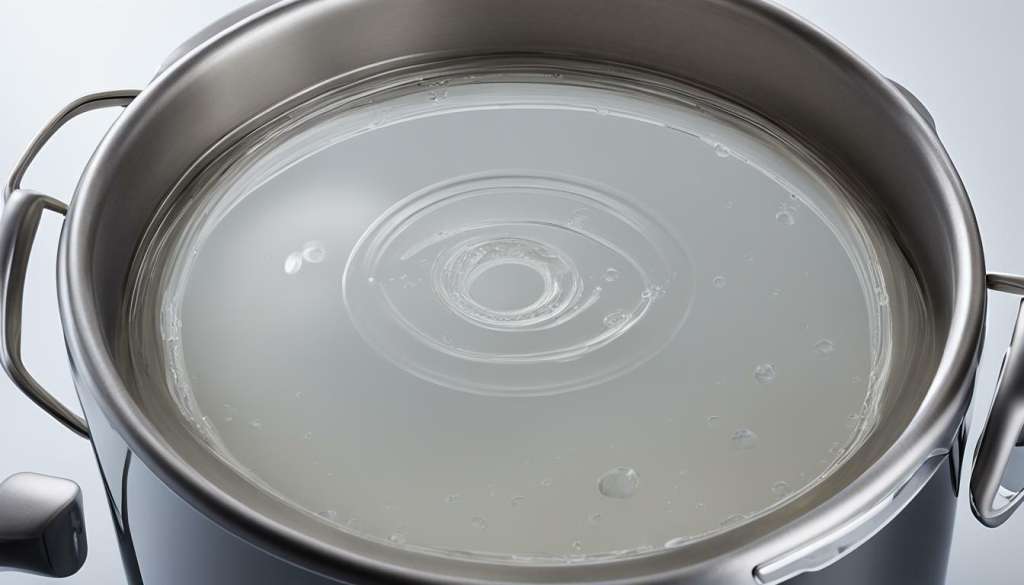
By making these adjustments to your rice cooker’s heat settings, you can prevent excessive bubbling and ensure perfectly cooked rice every time. Additionally, you can avoid the potential mess and frustration that comes with an overflowing rice cooker.
Proper Cleaning and Maintenance
Regular cleaning and maintenance of your rice cooker can help prevent bubbling issues. Over time, residue from cooked rice and other food particles can accumulate and clog up the vents on your rice cooker. This can cause steam to build up and bubble over during the cooking process, leading to potential messes and damage to your appliance.
To prevent this, it’s important to clean your rice cooker after each use. Start by unplugging the appliance and letting it cool down. Then, carefully remove the inner pot and wash it with warm, soapy water. Be sure to scrub all surfaces thoroughly, including the bottom of the pot where excess starch and debris can collect.
Next, wipe down the exterior of the rice cooker with a damp cloth. Pay special attention to the area surrounding the steam vent, as this is where buildup is most likely to occur. Use a soft, damp toothbrush to gently scrub any stubborn residue or buildup.
Finally, reassemble the rice cooker and store it in a cool, dry place. Regular maintenance, such as descaling with vinegar or cleaning with specialized rice cooker cleaning products, can also help to prevent bubbling and extend the life of your appliance.
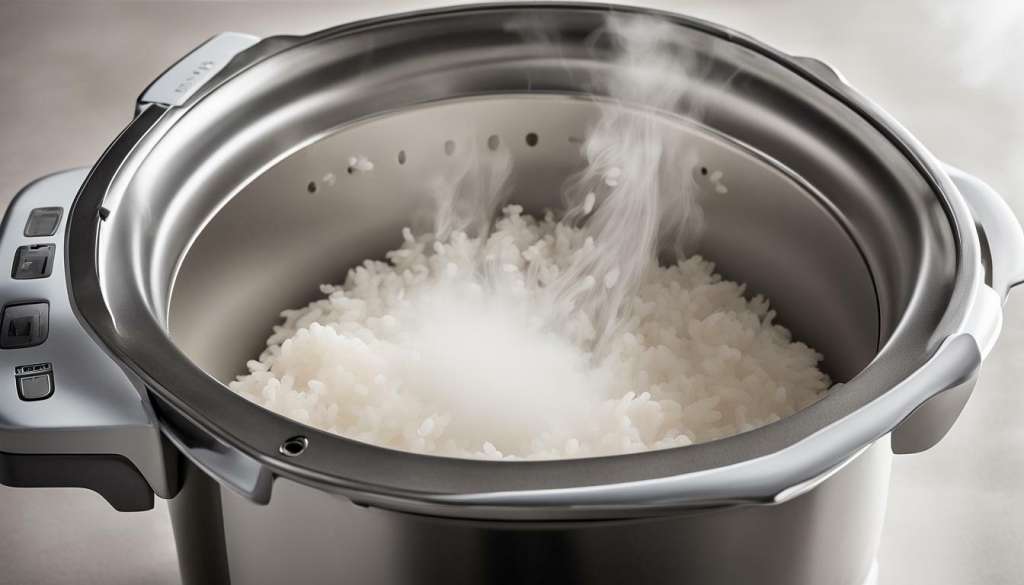
Regular cleaning and maintenance is key to preventing your rice cooker from bubbling over and ensuring perfectly cooked rice every time.
Troubleshooting Bubbling Issues
If your rice cooker is still bubbling despite taking measures to prevent it, don’t worry. There are additional troubleshooting steps you can take to identify and resolve the issue.
Measurements
One common issue is incorrect measurements of rice and water. Make sure you are following the instructions for your specific rice cooker, including the correct water-to-rice ratio. Too much water can cause excessive bubbling and boiling over.
Heat Settings
Another potential cause is the heat settings on your rice cooker. If the heat is too high, it can cause excessive bubbling and boiling over. Try adjusting the heat to a lower level and see if it makes a difference. Keep in mind that different rice cookers may have different heat settings, so refer to your manual for instructions.
Cleaning and Maintenance
If your rice cooker is still bubbling after adjusting measurements and heat settings, it may be time for a thorough cleaning. Make sure to clean your rice cooker regularly, using mild soap and water. Buildup on the heating element can cause issues with bubbling and boiling over. Additionally, regularly checking the seal and lid for any damage can help prevent steam from escaping, which can also cause bubbling issues.
Water Level Indicator
It’s also possible that the water level indicator on your rice cooker is not accurate. Check the indicator to make sure it is properly calibrated. If it is not, you may need to make adjustments to the water-to-rice ratio to compensate.
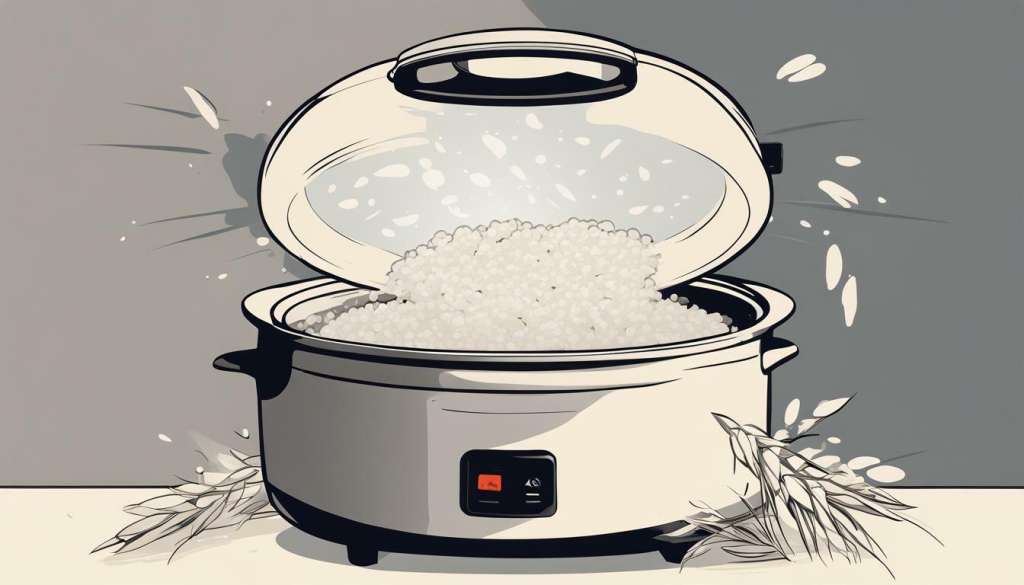 |
Following these troubleshooting steps should help you identify and resolve any bubbling issues with your rice cooker. Remember to always refer to your specific rice cooker’s manual for instructions and guidelines.
Are Bubbles Normal?
If you’ve ever used a rice cooker, you may have noticed bubbles forming in the water during the cooking process. This is a common occurrence and, for the most part, completely normal. In fact, some rice cookers are designed to bubble as a way to indicate that the rice is cooking properly. However, excessive bubbling can be a cause for concern, as it can lead to water and rice spilling over the sides of the cooker, making a mess on your countertop.
So, is your rice cooker supposed to bubble? The short answer is yes, but only to a certain extent. Bubbles that are small and gentle are perfectly normal and can help create the steam necessary to cook the rice evenly. However, if your rice cooker is making large, violent bubbles or boiling over, it may be a sign of an issue that needs to be addressed.
It’s important to note that the amount of bubbling can vary depending on the type of rice you’re cooking, the amount of water you’re using, and the heat setting on your cooker. So, while some bubbling is normal, it’s essential to monitor your rice cooker to ensure that it’s not boiling over and making a mess.
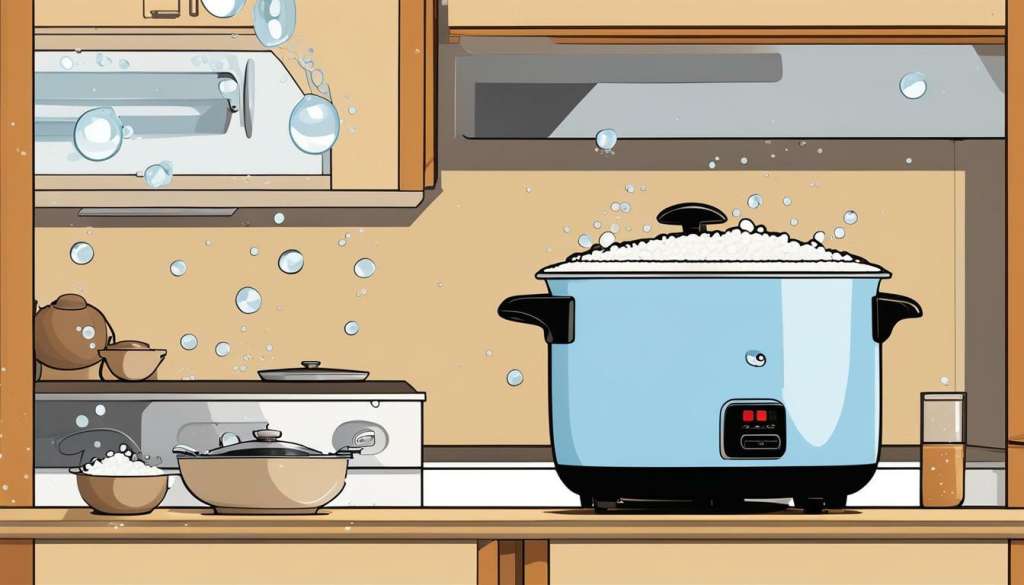
If you’re experiencing excessive bubbling, try adjusting the water-to-rice ratio or lowering the heat setting on your cooker. Regular cleaning and maintenance can also help prevent bubbling issues. By taking these steps, you can ensure that your rice is perfectly cooked without the mess of excessive bubbling.
Rice Cooker Alternatives
If you find that your rice cooker consistently bubbles over despite troubleshooting efforts, there are alternative cooking methods to consider. While rice cookers are convenient and produce consistent results, they are not the only way to cook rice.
One alternative is to cook rice on the stove. This method requires a bit more attention than a rice cooker, but it allows for greater control over the cooking process. To start, rinse the rice thoroughly and add it to a pot with the appropriate amount of water. Bring the mixture to a boil, then reduce the heat to a low simmer. Cover the pot and let the rice cook until the water is absorbed, usually around 18-20 minutes. Fluff the rice with a fork and serve.
Another alternative is to use a microwave rice cooker. These devices offer a similar level of convenience to an electric rice cooker and can produce excellent results. Simply add the appropriate amount of rice and water to the cooker, then microwave for the recommended amount of time.
Ultimately, the best rice cooker alternative for you will depend on your personal preferences and cooking habits. Don’t be afraid to try different methods until you find the one that works best for you.
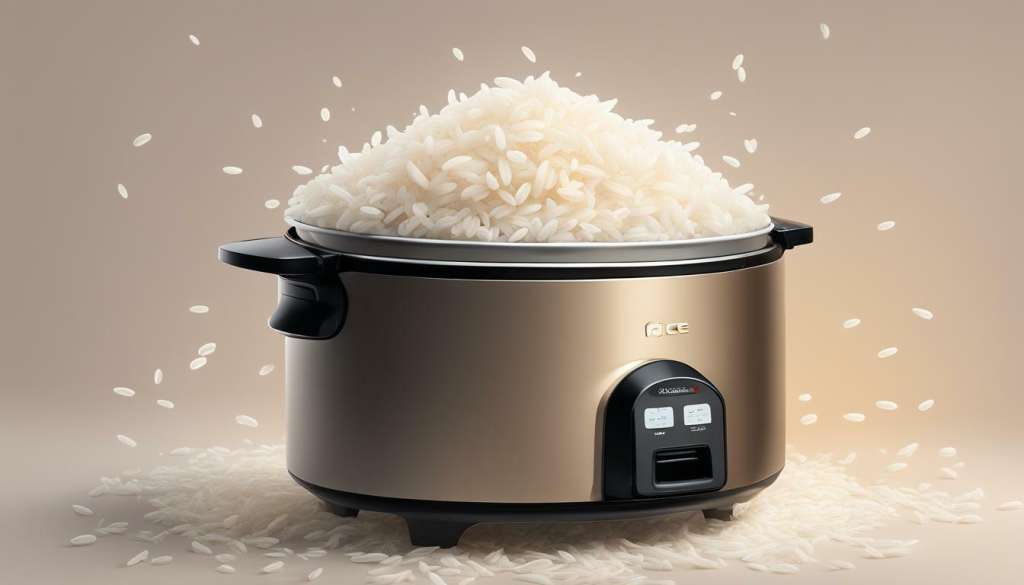
Conclusion
Although bubbling in a rice cooker during the cooking process can be concerning, it is normal for some bubbling to occur. However, excessive bubbling can be a sign of incorrect water-to-rice ratio, high heat, or other issues. Understanding the causes and solutions for bubbling is essential to achieving perfectly cooked rice.
By following proper procedures, such as measuring water accurately, adjusting heat settings, and regular cleaning and maintenance, you can prevent excessive bubbling and avoid potential messes. If you are still experiencing bubbling issues, troubleshooting tips can help identify and resolve potential issues.
For those who consistently experience excessive bubbling despite troubleshooting efforts, alternative cooking methods for preparing rice may be necessary.
In summary, with the proper techniques and attention to detail, you can enjoy perfectly cooked rice without excessive bubbling.
FAQ
Q: Is a rice cooker supposed to bubble?
A: Yes, during the cooking process, a rice cooker may bubble. Bubbling is a normal occurrence and indicates that the rice is cooking properly.
Q: How does a rice cooker work?
A: A rice cooker works by using a combination of heat and steam to cook rice. The cooker automatically adjusts the temperature to ensure the rice is cooked evenly.
Q: Why is my rice cooker bubbling over?
A: There are several reasons why your rice cooker might be bubbling over, including using too much water, setting the heat too high, or not measuring the rice and water correctly.
Q: What is the proper water-to-rice ratio?
A: The water-to-rice ratio is important for preventing excessive bubbling. A general rule of thumb is to use 1 ½ cups of water for every cup of rice.
Q: How can I adjust the heat settings on my rice cooker?
A: If your rice cooker is making excessive bubbles, you can try adjusting the heat settings. Lowering the heat slightly can help prevent bubbling and ensure even cooking.
Q: How do I clean and maintain my rice cooker?
A: Regular cleaning and maintenance can help prevent bubbling issues. After each use, make sure to clean the rice cooker pot and remove any residual rice or debris. Additionally, check the water release valve regularly and decalcify the cooker if necessary.
Q: What should I do if I’m still experiencing bubbling issues?
A: If you’re still experiencing bubbling problems despite following proper procedures, try troubleshooting. Check for any loose or damaged parts, ensure the rice cooker is on a stable surface, and consult the manufacturer’s instructions or customer support for further assistance.
Q: Is it normal for a rice cooker to bubble?
A: Yes, it is normal for a rice cooker to bubble during the cooking process. However, excessive bubbling may indicate an issue with the water-to-rice ratio or heat settings.
Q: What are the alternatives to using a rice cooker?
A: If your rice cooker consistently bubbles excessively despite troubleshooting efforts, there are alternative cooking methods for preparing rice. These include stove-top cooking, using a microwave rice cooker, or using an electric pressure cooker.


